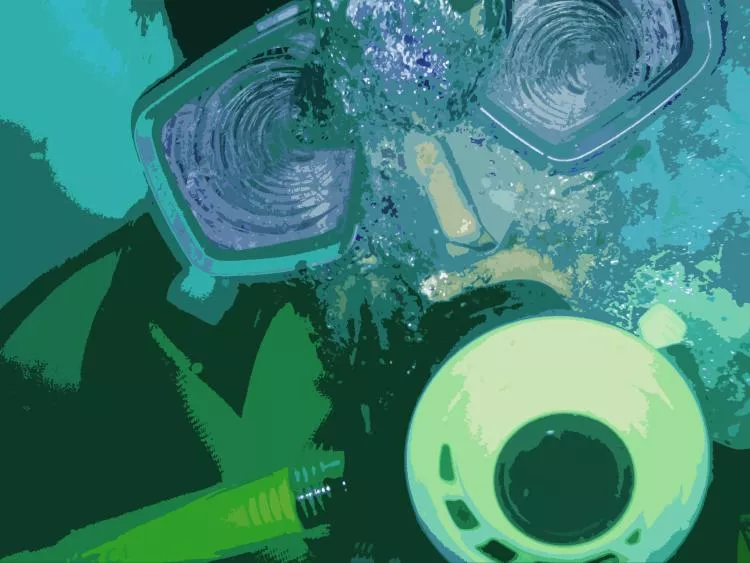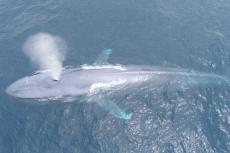People commonly say that experienced divers should guard against complacency, but what does that mean? Some associate the idea of complacency with arrogance, carelessness or negligence, and reassure themselves that if character traits such as these do not apply to them, then they do not have to worry about being complacent. Simon Pridmore offers insights into this phenomenon and how to prevent it.
Contributed by
Factfile

Scuba Compendium, a new single-volume e-book by Simon Pridmore, brings together four books in his bestselling Scuba series:
• Scuba Fundamental – Start Diving the Right Way
• Scuba Confidential – An Insider’s Guide to Becoming a Better Diver
• Scuba Exceptional – Become the Best Diver You Can Be
• Scuba Professional – Insights into Sport Diver Training & Operations
As Simon puts it, this is “a remastering and repackaging of the original albums rather than a greatest hits.” Nothing is missing. Scuba Compendium gives e-book readers the advantage of being able to access all the knowledge contained in the four books in one place, making this a unique and easily searchable work of reference for divers at every level.
Simon has always promoted the idea of safer diving through the acquisition of knowledge, which is why he has chosen to release this highly accessible version.
If you have read his work before, you will know that he provides divers with extremely useful advice and information, much of it unavailable elsewhere; his points often illustrated by real life experiences and cautionary tales. He examines familiar issues from new angles, looks at the wider picture and borrows techniques and procedures from other areas of human activity.
E-book File Size: 5298 KB
Published by Sandsmedia
Sold by: Amazon, Kobo, Tolino & others
ASIN: B09DBGHJSC
simonpridmore.com
The process of becoming complacent about the way you dive is insidious. It can sneak up on you stealthily and unremarked until one day, something happens, which makes you realise with a jolt, that you may not be the careful, conscientious, omniscient diver that you thought you were.
Here are a couple of examples.
This could never happen to me!
Amy was a professional dive guide. At the time this incident occurred, she had been working in diving for 12 years and had logged well in excess of 2,500 dives. She was on vacation, diving off the island of Halmahera in northeast Indonesia. It was the first dive of the day. She slipped her gear on in the boat, did her usual checks and back-rolled into the water. She had a problem descending at first so exhaled a little more fully than usual, ducked headfirst below the surface and kicked down.
The dive was a muck dive on a sandy slope, and she was concentrating, as usual, on trying to find stuff. Fifteen minutes into the dive at a depth of around 30m, her tank valve started banging into her head. This was a bit annoying, so she took her gear off, adjusted her tank strap, and then put her gear back on.
She set off again but soon started finding it hard to breathe.
“Damn it,” she grumbled to herself, “this is going to be one of these pesky dives when everything goes wrong.”
She tried switching to her octopus, but it was breathing hard too, so she switched back to her primary and kept going. Then she checked her pressure gauge, not because she believed she had an air supply problem (after all, she was still less than halfway through her dive), she was just making her usual routine occasional check.
The needle was at zero!
What the…”, was her first thought.
“Hmm, I need my buddy,” was her second.
Fortunately, he was nearby taking pictures and proved to be a very capable dive partner. He had plenty of air to spare and escorted her to the surface without any further drama.
When she got back to the dive centre, Amy’s first mission was to find out what had happened. Apparently, the staff on the boat had not changed her cylinder overnight, and she had gone into the water just with the 80 bar or so remaining from her last dive of the previous day.
Although the dive centre had made a mistake, Amy was quite willing to accept total responsibility for having run out of air. Before this incident, if you had asked her if she always checked her gauge before going in the water and then again frequently during the dive, she would have categorically said, “Absolutely… 100 percent, every dive!”
Well, apparently, she didn’t.
Later, she tried to analyse how she had lost the habit of carrying out one of scuba diving’s most basic pre-dive procedures. She concluded that maybe it was because, over the years, she had come to assume that her tank would always be full and, having never run out of air and with a lower air consumption rate than almost everybody else she dived with, she had subconsciously stopped bothering with it.
Thinking back, she realised that, in addition to failing to check her gauge, she had completely missed several early-warning signs that, given her experience, she really should have picked up on. With less air in it, the tank was more buoyant, and that was why she had difficulty making her initial descent. This also explained why her tank valve was banging against the back of her head. Finally, the development that should have made her realise that her tank was nearly empty was when her regulator stopped working properly. She could only guess that the reason she did not pick up this obvious clue immediately was that narcosis at depth was slowing down her thought processes.
Ignoring it
Ben is a master instructor and was diving in South Komodo, Indonesia, when he had an unusual experience.
Ten minutes into his first dive of the day, at a depth of around 18m, Ben heard a massive explosion and felt a pressure wave battering him on the back of his head. His first thought was that he had been fish-bombed. After all, he was in remote Southeast Asia, and this had happened to him before. Only when the thunderous noise did not stop did it occur to him that this could not be a bomb. He then concluded—correctly this time—that he had probably just had a catastrophic air supply failure.
The next few thoughts, actions and decisions came quickly one after the other. He looked at his pressure gauge, which was already down to 100 bar and falling fast. He could actually see the needle moving. His regulator was working, and he still had air to breathe, but this would not be the case for long. His first thought was to slip his BCD off and bring it around to the front so he could find out what had happened and see if he could deal with it himself, but with the needle still moving worryingly fast across the dial, he was afraid he might not have enough time.
He was going to need some help. The other divers in the group were not too far away and, as he swam towards them, with a fountain of bubbles pouring out from the top of his tank, one of them guessed what the problem was, came over, deployed her octopus, and ascended with him to the surface.
When he got back on board the boat, Ben found that the tank valve-face O-ring had split. He knew this was unlikely to have happened instantly. It had probably been showing signs of damage for a while and hissing out a little stream of air, but he could not remember hearing anything. He had probably ignored it. It happened all the time. However, when it failed, it got his complete attention. He had seen a damaged O-ring blow on the surface before a dive many times but had never experienced it underwater. For some reason, he did not think it could happen!
Ben had always thought he would be able to deal with anything that happened to him on a dive without difficulty, but he did not expect to have so little time when his O-ring blew. The speed at which his tank pressure started dropping unnerved him. He looked online and found details of tests run by Advanced Diver Magazine in the USA, which showed that a valve O-ring failure would typically empty a full scuba cylinder in less than 90 seconds. Ben had no idea.
Now, he does. Now, he replaces all O-rings as soon as he notices bubbles, and he does not do deep dives alone, with just a single cylinder, anymore.





























